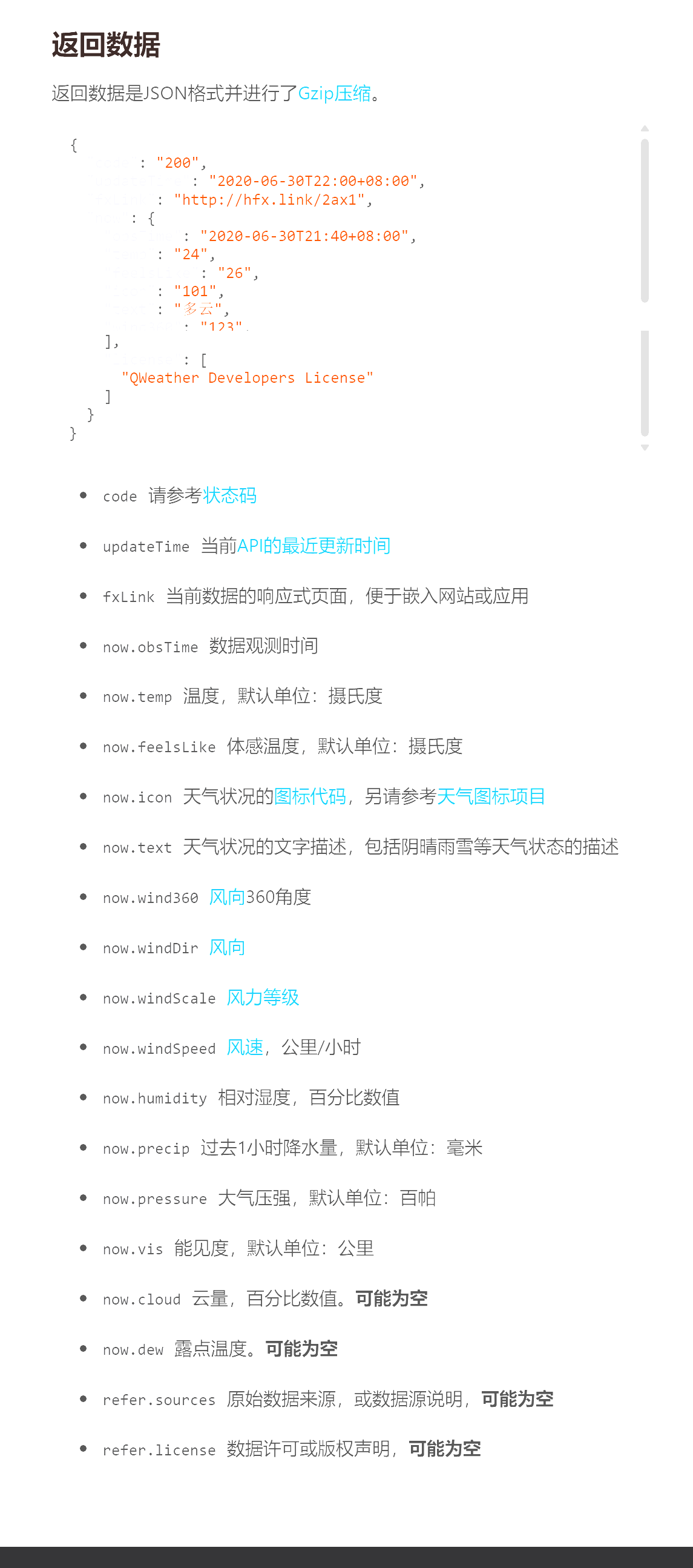一、线程池模式介绍
线程池模式(Thread Pool Pattern)是一种并发设计模式,用于管理和循环使用线程资源以处理大量任务。它旨在提高系统性能和资源利用率,特别是在需要频繁创建和销毁线程的环境中。
1、线程池模式结构图

线程池管理器(Thread Pool Manager):
- 负责线程池的初始化、维护和管理。它创建线程池中的线程,并根据任务负载调整线程数量。
- 提供接口供客户端提交任务,并管理任务队列的状态。
线程(Worker Thread):
- 线程池中的实际线程,用于执行从任务队列中取出的任务。
- 线程在任务执行完毕后返回线程池中,等待下一个任务。
任务(Task):
- 任务是需要由线程池处理的工作单元。任务通常是实现了特定接口的对象或函数。
- 线程池的线程从任务队列中取出任务并执行。
任务队列(Task Queue):
- 存储待处理的任务。线程池中的线程从任务队列中获取任务并执行。
- 任务队列的实现可能会影响线程池的性能和效率。
2、创建线程池的4种常见方法
固定大小线程池(Fixed Thread Pool):
- 线程池中的线程数量是固定的,适用于任务量和负载相对稳定的场景。
定时任务线程池(Scheduled Thread Pool):
- 支持任务的延迟执行和周期性执行。适用于需要在特定时间间隔执行任务的场景。
自适应线程池(Adaptive Thread Pool):
- 根据系统负载和任务需求动态调整线程池的大小,能够更好地适应变化的负载。
可缓存线程池(Cached Thread Pool):
- 线程池中的线程数量根据任务的需求动态调整。如果线程池中的线程空闲时间超过一定阈值,它们可能会被销毁。
二、线程池的设计方法
示范说明:为了便于演示,所有模拟的任务时间都是固定时间(焊四)。
1、固定大小线程池示例
完整代码
fix_threadpool.cpp
#include <iostream>
#include <vector>
#include <thread>
#include <queue>
#include <functional>
#include <mutex>
#include <condition_variable>
#include <chrono>// 添加互斥锁以保护 std::cout
std::mutex coutMutex;// 线程池
class ThreadPool {
public:ThreadPool(size_t numThreads) : stop(false) {for (size_t i = 0; i < numThreads; ++i) {workers.emplace_back([this] () {while (true) {std::function<void()> task;{std::unique_lock<std::mutex> lock(this->queueMutex);this->condition.wait(lock, [this] () {return this->stop || !this->tasks.empty();});if (this->stop && this->tasks.empty()) {return;}task = std::move(this->tasks.front());this->tasks.pop();}task();}} );}}ThreadPool(const ThreadPool&) = delete;ThreadPool& operator=(const ThreadPool&) = delete;~ThreadPool() {{std::unique_lock<std::mutex> lock(queueMutex);stop = true;}condition.notify_all();for (std::thread& worker : workers) {worker.join(); // 阻塞线程,等待主线程回收子线程}}template<class F, class... Args>void enqueue(F&& f, Args&&... args) {{std::unique_lock<std::mutex> lock(queueMutex);if (stop) {throw std::runtime_error("Error: 在已停止的线程池上排队! ");}tasks.emplace([f, args...]() {f(args...);});}condition.notify_one();}private:std::vector<std::thread> workers;std::queue<std::function<void()>> tasks;std::mutex queueMutex;std::condition_variable condition;bool stop;
};void simulateTasks(int id) {std::lock_guard<std::mutex> guard(coutMutex);std::cout << "线程 " << std::this_thread::get_id() << " 正在执行 " << id << "任务\n";// 模拟任务时间相同,每个任务耗时1msstd::this_thread::sleep_for(std::chrono::milliseconds(1));
}int main() {// 创建4个线程池ThreadPool pool(4);// 创建1081个模拟的任务,加入队列中for (int i = 0; i < 1081; ++i) {pool.enqueue(simulateTasks, i);}return 0;
}运行效果
代码使用固定线程池创建4个线程,并创建1081个模拟的任务被这4个线程共同并发执行,实际线程号只有4种,他们之间通过互斥锁防止恶性竞争,并通过一把全局互斥锁保护 std::cout 的访问。从运行效果看运行速度非常快。

2、可缓存线程池示例
完整代码
cache_threadpool.cpp
#include <iostream>
#include <thread>
#include <vector>
#include <queue>
#include <condition_variable>
#include <mutex>
#include <functional>
#include <chrono>
#include <atomic>
#include <future>
#include <map>
#include <iomanip>std::mutex coutMutex; // 添加全局互斥锁以保护 std::coutclass CachedThreadPool {
public:CachedThreadPool(size_t initialThreads = std::thread::hardware_concurrency(), int idleTimeout = 20): maxThreads(initialThreads), shutdown(false), idleTimeout(idleTimeout) {startThreads(initialThreads);}~CachedThreadPool() {{std::unique_lock<std::mutex> lock(queueMutex);shutdown = true;}condVar.notify_all();for (std::thread& worker : workers) {if (worker.joinable()) {worker.join();}}}std::future<void> enqueueTask(std::function<void()> task) {std::packaged_task<void()> packagedTask(std::move(task));std::future<void> future = packagedTask.get_future();{std::unique_lock<std::mutex> lock(queueMutex);tasks.push(std::move(packagedTask));lastActive = std::chrono::steady_clock::now();}condVar.notify_one();return future;}private:void startThreads(size_t count) {for (size_t i = 0; i < count; ++i) {workers.emplace_back([this]() {auto lastActiveTime = std::chrono::steady_clock::now();auto threadStartTime = lastActiveTime; // 记录线程开始活动时间static int TaskCode = 0;while (true) {std::packaged_task<void()> task;{std::unique_lock<std::mutex> lock(queueMutex);// 等待任务到来或者超时(释放互斥锁)condVar.wait_for(lock, std::chrono::seconds(idleTimeout), [this]() {return shutdown || !tasks.empty();});if (!tasks.empty()) {std::lock_guard<std::mutex> guard(coutMutex);task = std::move(tasks.front());tasks.pop();TaskCode++; // 任务代号lastActive = std::chrono::steady_clock::now();std::cout << "线程 " << std::this_thread::get_id() << " 执行任务:" << TaskCode << " 开始时间: " << toTimeString(threadStartTime) << std::endl;std::cout << "线程 " << std::this_thread::get_id() << " 执行任务:" << TaskCode << " 最后一次活动时间: " << toTimeString(lastActive) << std::endl;lastActiveTime = lastActive;} else {// 当任务为空,从线程池的最后一次活动状态开始记录超时时间auto now = std::chrono::steady_clock::now();while (std::chrono::duration_cast<std::chrono::seconds>(now - lastActiveTime).count() < idleTimeout) {now = std::chrono::steady_clock::now();}if (shutdown && tasks.empty()) {break;} }}try {task();} catch (const std::exception& e) {std::cerr << e.what() << std::endl;}}// 线程销毁时的处理{std::lock_guard<std::mutex> guard(coutMutex);std::cout << "线程 " << std::this_thread::get_id() << " 已销毁" << std::endl;}});}}std::string toTimeString(const std::chrono::steady_clock::time_point& tp) const {using namespace std::chrono;auto timeT = system_clock::to_time_t(system_clock::now() + (tp - steady_clock::now()));std::tm tm = *std::localtime(&timeT);std::ostringstream oss;oss << std::put_time(&tm, "%Y-%m-%d %H:%M:%S");return oss.str();}size_t maxThreads;std::vector<std::thread> workers;std::queue<std::packaged_task<void()>> tasks;std::mutex queueMutex;std::condition_variable condVar;std::atomic<bool> shutdown;std::chrono::steady_clock::time_point lastActive;int idleTimeout;
};int main() {CachedThreadPool pool;std::vector<std::future<void>> tasks;// 模拟20个任务for (int i = 1; i <= 20; ++i) {tasks.push_back(pool.enqueueTask([i, &pool]() {{std::lock_guard<std::mutex> guard(coutMutex);std::cout << i << " 任务被 " << std::this_thread::get_id() << " 线程执行中." << std::endl;}std::this_thread::sleep_for(std::chrono::seconds(1));}));}// 等待所有任务完成for (auto& task : tasks) {task.get();}// 程序退出前稍作等待,确保所有销毁信息被打印出来std::this_thread::sleep_for(std::chrono::seconds(1));std::cout << "\n主线程等待20秒后回收所有线程资源,程序退出 " << std::endl;return 0;
}运行效果
代码简单实现可缓存的线程池,首先调用std::thread::hardware_concurrency()函数获取4个线程共同完成20个模拟的任务,每个模拟的任务需耗时1s,从输出结果看4个线程4s完成20个模拟任务,完成任务后等待20s触发超时,join()函数阻塞,然后所有子线程被主线程回收,程序退出。

3、定时任务线程池示例
完整代码
timing_threadpool.cpp
#include <iostream>
#include <vector>
#include <thread>
#include <chrono>
#include <mutex>
#include <condition_variable>
#include <queue>
#include <functional>
#include <atomic>
#include <iomanip>// 全局一把锁
std::mutex taskMutex;class ThreadPool {
public:static ThreadPool& getInstance(size_t numThreads) {static ThreadPool instance(numThreads);return instance;}ThreadPool(const ThreadPool&) = delete;ThreadPool& operator=(const ThreadPool&) = delete;void enqueueTask(const std::function<void()>& task);void start();void stop();private:ThreadPool(size_t numThreads);~ThreadPool();void workerThread();std::vector<std::thread> workers;std::queue<std::function<void()>> tasks;std::condition_variable condVar;std::atomic<bool> stopFlag;std::atomic<bool> runFlag;std::chrono::seconds interval{10};
};ThreadPool::ThreadPool(size_t numThreads) : stopFlag(false), runFlag(false) {workers.reserve(numThreads);
}ThreadPool::~ThreadPool() { stop(); }void ThreadPool::enqueueTask(const std::function<void()>& task) {std::lock_guard<std::mutex> lock(taskMutex);tasks.push(task);condVar.notify_one();
}void ThreadPool::start() {runFlag = true;for (size_t i = 0; i < workers.capacity(); ++i) {workers.emplace_back(&ThreadPool::workerThread, this);}
}void ThreadPool::stop() {stopFlag = true;condVar.notify_all();for (std::thread& worker : workers) {if (worker.joinable()) {worker.join();}}runFlag = false;
}void ThreadPool::workerThread() {while (!stopFlag) {std::function<void()> task;{std::unique_lock<std::mutex> lock(taskMutex);condVar.wait_for(lock, interval, [this]() {return !tasks.empty() || stopFlag;});if (stopFlag && tasks.empty()) {return;}if (!tasks.empty()) {task = tasks.front();tasks.pop();}}if (task) { task(); }}
}// 任务模拟
void simulateTask(const std::string& type) {std::cout << "线程 " << std::this_thread::get_id() << " 执行任务:" << type <<std::endl;// 模拟任务调度耗时1sstd::this_thread::sleep_for(std::chrono::seconds(1));
}// 时间格式转换
std::string toTimeString(const std::chrono::system_clock::time_point& time) {using namespace std::chrono;auto timeT = system_clock::to_time_t(time);std::tm tm = *std::localtime(&timeT);std::ostringstream oss;oss << std::put_time(&tm, "%Y-%m-%d %H:%M:%S");return oss.str();
}int main() {// 单例模式创建2个线程ThreadPool& pool = ThreadPool::getInstance(2);// 启动线程池pool.start();// 添加任务到线程池std::string type = "冒烟测试";std::thread([&pool, type]() {while(true) {pool.enqueueTask([type]() {std::cout << "任务:" << type << ",在 " << toTimeString(std::chrono::system_clock::now()) << " 触发执行" << std::endl;simulateTask(type);});std::this_thread::sleep_for(std::chrono::seconds(10));}}).detach();// 主线程休眠1分钟,不让主线程死循环并留出一分钟时间让子线程周期性执行任务std::this_thread::sleep_for(std::chrono::minutes(1));std::cout << "\n最长演示时间1分钟,线程已回收,程序结束。" << std::endl;pool.stop();return 0;
}运行效果
定义全局的唯把锁,设计单例模式的线程池,主函数中调用单例创建2个线程加入线程池,这2个线程每隔10s周期性执行simulate函数(函数代表被模拟的任务)。

4、自适应线程池
完整代码
adaptive_threadpool.cpp
#include <iostream>
#include <thread>
#include <functional>
#include <queue>
#include <mutex>
#include <condition_variable>
#include <vector>
#include <algorithm>
#include <chrono>
#include <string>
#include <atomic>
#include <iomanip>
#include <sys/select.h>
#include <unistd.h>// 任务锁
std::mutex taskMutex;class ThreadPool {
public:// 获取单例实例static ThreadPool& getInstance(size_t min_threads = 1) {static ThreadPool instance(min_threads);return instance;}ThreadPool(const ThreadPool&) = delete;ThreadPool& operator=(const ThreadPool&) = delete;// 执行任务void execute(std::function<void()> task) {{std::unique_lock<std::mutex> lock(queue_mutex);if (stop) {throw std::runtime_error("线程池已停止运行.");}tasks.emplace(std::move(task));++task_count; // 增加任务计数}condition.notify_one();}void start(size_t min_threads) {std::lock_guard<std::mutex> lock(queue_mutex);max_threads = std::max(max_threads, min_threads);workers.reserve(max_threads);for (size_t i = workers.size(); i < max_threads; ++i) {workers.emplace_back(&ThreadPool::worker_thread, this);}}~ThreadPool() {{std::unique_lock<std::mutex> lock(queue_mutex);stop = true;}condition.notify_all();for (auto& worker : workers) {if (worker.joinable()) {worker.join();}}}// 等待所有任务完成void wait() {std::unique_lock<std::mutex> lock(queue_mutex);finished_condition.wait(lock, [this]() { return task_count == 0; });}private:ThreadPool(size_t min_threads = 1) : max_threads(min_threads), stop(false), task_count(0) {}void worker_thread() {while (true) {std::function<void()> task;{std::unique_lock<std::mutex> lock(queue_mutex);condition.wait(lock, [this] { return stop || !tasks.empty(); });if (stop && tasks.empty()) {return;}task = std::move(tasks.front());tasks.pop();}task();// 自适应调整线程池大小{std::lock_guard<std::mutex> lock(queue_mutex);if (tasks.size() > max_threads * 3 && workers.size() < max_threads) {size_t additional_threads = std::min(max_threads - workers.size(), tasks.size() / 10);for (size_t i = 0; i < additional_threads; ++i) {workers.emplace_back(&ThreadPool::worker_thread, this);}}}// 任务完成,减少计数器并通知主线程{std::lock_guard<std::mutex> lock(queue_mutex);--task_count;if (task_count == 0) {finished_condition.notify_one();}}}}std::vector<std::thread> workers;std::queue<std::function<void()>> tasks;std::mutex queue_mutex;std::condition_variable condition;std::condition_variable finished_condition;size_t max_threads;std::atomic<bool> stop;std::atomic<size_t> task_count; // 任务计数器
};// 时间格式转换
std::string toTimeString(const std::chrono::system_clock::time_point& time) {using namespace std::chrono;auto timeT = system_clock::to_time_t(time);std::tm tm = *std::localtime(&timeT);std::ostringstream oss;oss << std::put_time(&tm, "%Y-%m-%d %H:%M:%S");return oss.str();
}// 超时处理
bool getInputWithTimeout(std::string& input, int timeoutSeconds) {fd_set set;struct timeval timeout;int rv;FD_ZERO(&set);FD_SET(STDIN_FILENO, &set);timeout.tv_sec = timeoutSeconds;timeout.tv_usec = 0;rv = select(STDIN_FILENO + 1, &set, NULL, NULL, &timeout);if (rv == -1) {std::cerr << "select() 错误" << std::endl;return false;} else if (rv == 0) {return false;} else {std::getline(std::cin, input);return true;}
}// 任务模拟
void simulateTask(const std::string& type, const int index) {std::lock_guard<std::mutex> lock(taskMutex);std::cout << "序号:" << index << " 线程 " << std::this_thread::get_id() << " 在运行任务 " << type << " " << toTimeString(std::chrono::system_clock::now()) << std::endl;
}int main() {
/*模拟客户端永不关机,线程池每隔10s周期性轮询任务,\
!!! 如果任务不存在,或超时,则执行上一次模拟的任务.
*/ThreadPool& pool = ThreadPool::getInstance();// 启动线程池(初始创建2个线程)pool.start(2);static std::string type = "";while (true) {std::cout << "输入任务称号(按 Enter 键结束输入): " << std::flush;if (getInputWithTimeout(type, 20) && !type.empty()) {std::cout << "\n正在执行新任务 " << type << "\n" << std::endl;} else if (type.empty() && !getInputWithTimeout(type, 20)) {std::cout << "\n输入为空 或 超时20s未输入,执行默认任务.\n" << std::endl;type = "黑神话·悟空";} else {std::cout << "\n输入为空 或 超时20s未输入,执行上一次任务.\n" << std::endl;}// 传递任务参数std::string localType = type;for (int i = 0; i < 20; ++i) {pool.execute([i, localType]() {simulateTask(localType, i);// 模拟任务调度耗时std::this_thread::sleep_for(std::chrono::seconds(i*1));});}// 等待所有任务完成pool.wait();// 所有任务完成后再进行等待std::cout << "\n所有任务已完成,等待 10 秒...\n" << std::endl;std::this_thread::sleep_for(std::chrono::seconds(10));}return 0;
}代码实现模拟的客户端永不关机,单例线程池每隔10s周期性轮询任务。如果任务不存在,或超时20s终端未输入任何信息,则执行默认的模拟任务,如果任务上次执行过,这次轮询时间不存在新的任务,则执行上一次的任务。
运行效果

三、线程池模式的应用场景
1. Web服务器
- 请求处理:Web服务器通常需要处理大量并发的HTTP请求。线程池可以管理和复用线程,以高效地处理这些请求。线程池的大小可以根据服务器的负载动态调整,优化资源利用率。
2. 后台任务处理
- 定时任务:如数据备份、日志清理、定时报告生成等。线程池可以定期执行这些任务,确保它们不会影响系统的响应性能。
- 异步任务:例如,在用户提交数据后,后台线程可以异步处理数据或执行长时间运行的操作,而不会阻塞用户的操作。
3. 并发数据处理
- 大数据处理:在大数据处理框架中,如Apache Hadoop、Apache Spark等,线程池用于处理并发的数据任务,如数据读取、转换和写入。
- 数据分析:在进行数据分析时,线程池可以用来并发处理数据集中的多个数据片段,提高分析效率。
4. 并发计算
- 计算密集型任务:如图像处理、科学计算等,线程池可以并发执行多个计算任务,缩短计算时间。
- 模拟和建模:在进行复杂的模拟或建模时,线程池可以同时运行多个模拟实例,加快结果的生成速度。
5. 消息队列处理
- 消息消费:在消息队列系统(如Kafka、RabbitMQ等)中,线程池可以处理从消息队列中消费的消息。通过线程池的线程并发处理消息,提高系统的吞吐量。
6. 网络应用
- 连接管理:如数据库连接池和网络连接池,线程池用于管理和复用数据库或网络连接,以提高资源利用率和连接响应速度。
- 并发请求处理:在需要处理大量并发网络请求的应用中,如在线游戏、实时聊天应用等,线程池可以有效管理网络连接和请求处理。
7. GUI应用
- 后台任务:在图形用户界面(GUI)应用中,线程池可以处理后台任务(如文件下载、数据加载等),以确保用户界面的响应性和流畅性。
- 长时间运行的操作:通过线程池处理长时间运行的操作,避免阻塞主线程,从而保持界面的流畅性和响应速度。
8. 实时系统
- 实时数据处理:在实时系统中,线程池可以并发处理传感器数据、事件流等,以满足实时性要求。
- 高频交易:在金融交易系统中,线程池可以处理大量并发的交易请求和市场数据,保证交易系统的高效运行。
9. 计算任务调度
- 批处理作业:在批处理作业调度中,线程池可以调度和并发执行多个作业,优化批处理的执行时间。
- 任务分配:在分布式系统中,线程池可以管理和分配任务到各个计算节点,协调任务的执行。
四、总结
实际上线程池模式属于GoF一书23种设计模式的一种或多种设计模式组合。线程池的主要优点包括减少创建和销毁线程的开销、提高资源的利用率、简化线程管理。它适用于需要处理大量短时间任务的场景(如高并发)。在实际应用中,线程池模式有助于提高系统的响应速度和吞吐量,减少资源浪费,并使任务处理更为高效和可控。













![[数据集][目标检测]翻越栏杆行为检测数据集VOC+YOLO格式512张1类别](https://i-blog.csdnimg.cn/direct/89dbb7b5f7f048e1be7b315b429907df.png)
